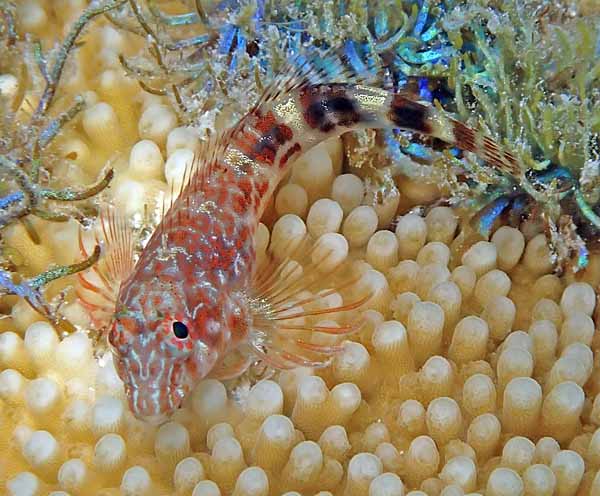Hypleurochilus springeri
Randall, 1966
|
Familie: Blenniidae
Lokale Bezeichnung |
Typen
Holotypus: USNM 231716 [ex USNM 257884-Fl] .
Siehe: Eschmeyer, W.N., Fricke, R. & Van der Laan, R. (eds.) 2024. Catalog of Fishes electronic version
Typusfundort: Cabo Rojo (Karte), südwestlich des Leuchtturms, Puerto Rico, Tiefe 0-5 Fuß.
Etymologie
Benannt zu Ehren des Ichthyologen Victor G. Springer (geb. 1928), U.S. National Museum, für seine "Forschung und sein anhaltendes Interesse an blennioiden Fischen". (Übersetzt aus: The ETYFish Project)
Verbreitung
Westlicher Atlantik: südliches Florida in den USA und Bahamas bis zum nördlichen Südamerika.
IUCN Status

EX Extinct (ausgestorben)
EW Extinct in the Wild (in der Natur ausgestorben)
CR Critically Endangered (vom Aussterben bedroht)EN Endangered (stark gefährdet)
VU Vulnerable (gefährdet)
NT Near Threatened (potenziell gefährdet)
LC Least Concern (nicht gefährdet)
RE Regionally Extinct (regional oder national ausgestorben)DD Data Deficient (ungenügende Datengrundlage)
NE Not Evaluated (nicht beurteilt)
LC Least Concern (nicht gefährdet)
Gefahren für diese Art: Keine größeren Gefahren bekannt.
Literatur
- Randall, J.E. 1966. The West Indian blenniid fishes of the genus Hypleurochilus, with the description of a new species. Proceedings of the Biological Society of Washington, 79: 57-72. (BHL) Zitatseite [:65, Fig. 1C, !!]
- Greenfield, D.W. & Johnson, R.K. 1981. The blennioid fishes of Belize and Honduras, Central America, with comments on their systematics, ecology, and distribution (Blenniidae, Chaenopsidae, Labrisomidae, Tripterygiidae). Fieldiana Zoology, New Series, 8: 1–106. Zitatseite [:70]
- Robins, C.R. & Ray, G.C. 1986. A field guide to Atlantic coast fishes of North America. Houghton Mifflin Co., Boston, MA, USA, 354 pp. Zitatseite [:231]
- Carter, J.E., Sporre, M.A. & Eytan, R.I. 2023. Phylogenetic review of the comb-tooth blenny genus Hypleurochilus in the northwest Atlantic and Gulf of Mexico. Molecular Phylogenetics and Evolution, 189: 107933. (doi) Zitatseite
